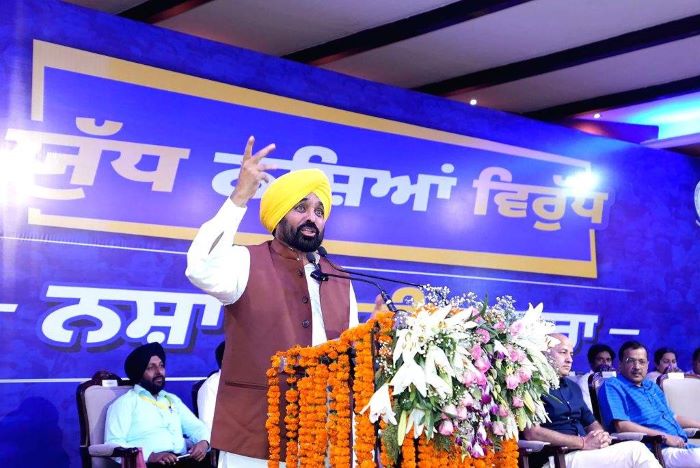 The Punjab government’s intensified campaign against drug abuse and trafficking — titled ‘Yudh Nashian De Virudh’ — has shown significant activity on paper. Director General of Police (DGP) Gaurav Yadav recently presented a detailed review at the Punjab Police Academy in Phillaur, highlighting notable enforcement achievements. Among the key highlights, the DGP mentioned that since March 1, 2024, the state police have arrested 22,772 drug smugglers, registered 14,281 FIRs, and seized large quantities of narcotics, including 940 kg of heroin, 337 kg of opium, and 18 tonnes of poppy husk.
The Punjab government’s intensified campaign against drug abuse and trafficking — titled ‘Yudh Nashian De Virudh’ — has shown significant activity on paper. Director General of Police (DGP) Gaurav Yadav recently presented a detailed review at the Punjab Police Academy in Phillaur, highlighting notable enforcement achievements. Among the key highlights, the DGP mentioned that since March 1, 2024, the state police have arrested 22,772 drug smugglers, registered 14,281 FIRs, and seized large quantities of narcotics, including 940 kg of heroin, 337 kg of opium, and 18 tonnes of poppy husk.
The DGP emphasised the success of the ‘Safe Punjab’ WhatsApp chatbot (9779100200), a digital platform launched to encourage anonymous reporting of drug-related activities. The chatbot has resulted in 4,872 arrests and 3,671 FIRs since March 1, with a remarkable 30% tip conversion rate — an unusually high figure in policing standards. Yadav described the chatbot as a “game-changer” that has helped restore public faith by offering confidential channels to report traffickers and addicts without fear or social stigma.
But while these statistics paint a strong picture of action and recovery, they also raise a troubling question: if the drug supply chain has been choked, then from where are such massive drug quantities still entering Punjab? A staggering 940 kg of heroin and over Rs 11.84 crore in drug money recovered in less than five months suggests that narcotics are still flowing in large volumes across the state’s borders. Despite boasting of a 90% conviction rate in NDPS (Narcotic Drugs and Psychotropic Substances) Act cases, the repeated seizures indicate that the roots of drug smuggling remain deeply entrenched and possibly systemic.
Another glaring gap lies in the absence of clarity about how these drugs continue to infiltrate Punjab. Are these being smuggled from across the international border with Pakistan? Are inter-state syndicates from Delhi, Rajasthan, and Uttar Pradesh still active? Or does the problem lie within Punjab itself, among networks that have evaded dismantling despite the official crackdown? The DGP’s report, while detailed in arrests and FIRs, does not address how these supply lines have survived — a gap that makes the campaign’s effectiveness questionable.
Moreover, drug seizure alone does not define success. The actual impact must also be measured by ground-level change — such as decreased addiction rates, increased rehabilitation enrollments, and community-led vigilance. Unfortunately, the government has released no consolidated data on how many addicts have been helped or how communities have been empowered to resist drug culture.
In conclusion, while the Punjab Police under DGP Gaurav Yadav have certainly intensified action, the campaign’s success appears largely procedural and reactive rather than transformative. As long as heavy quantities of narcotics continue to be seized and new arrests are made weekly, it is clear that the drug supply network is far from broken. The question remains: if the system is working so well, why hasn’t the drug problem ended — and where is all this new heroin and opium coming from? Without honest introspection and transparent reporting on the origin, reach, and rehabilitation aspects, the anti-drug war may look successful in reports, but not in the streets of Punjab.